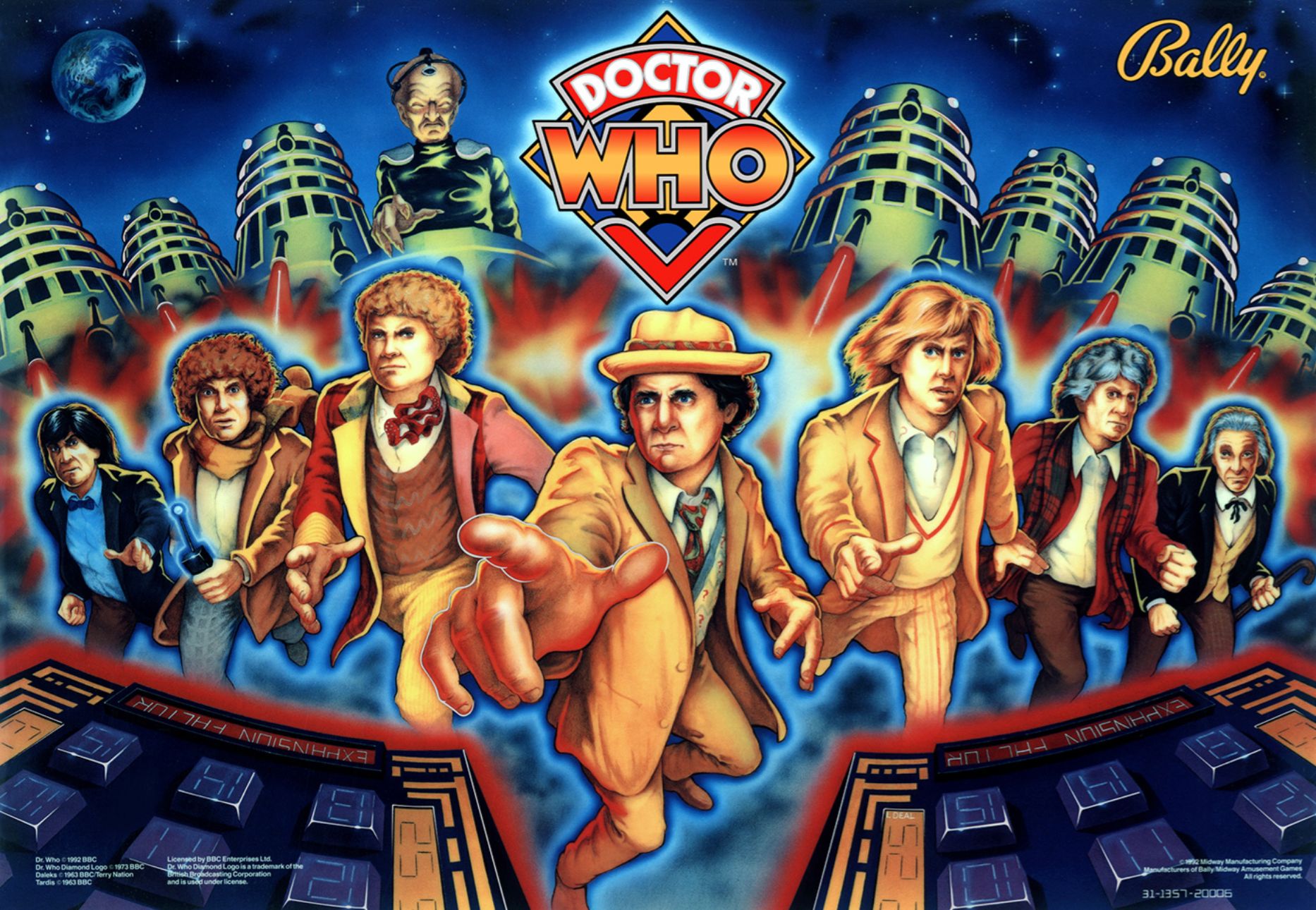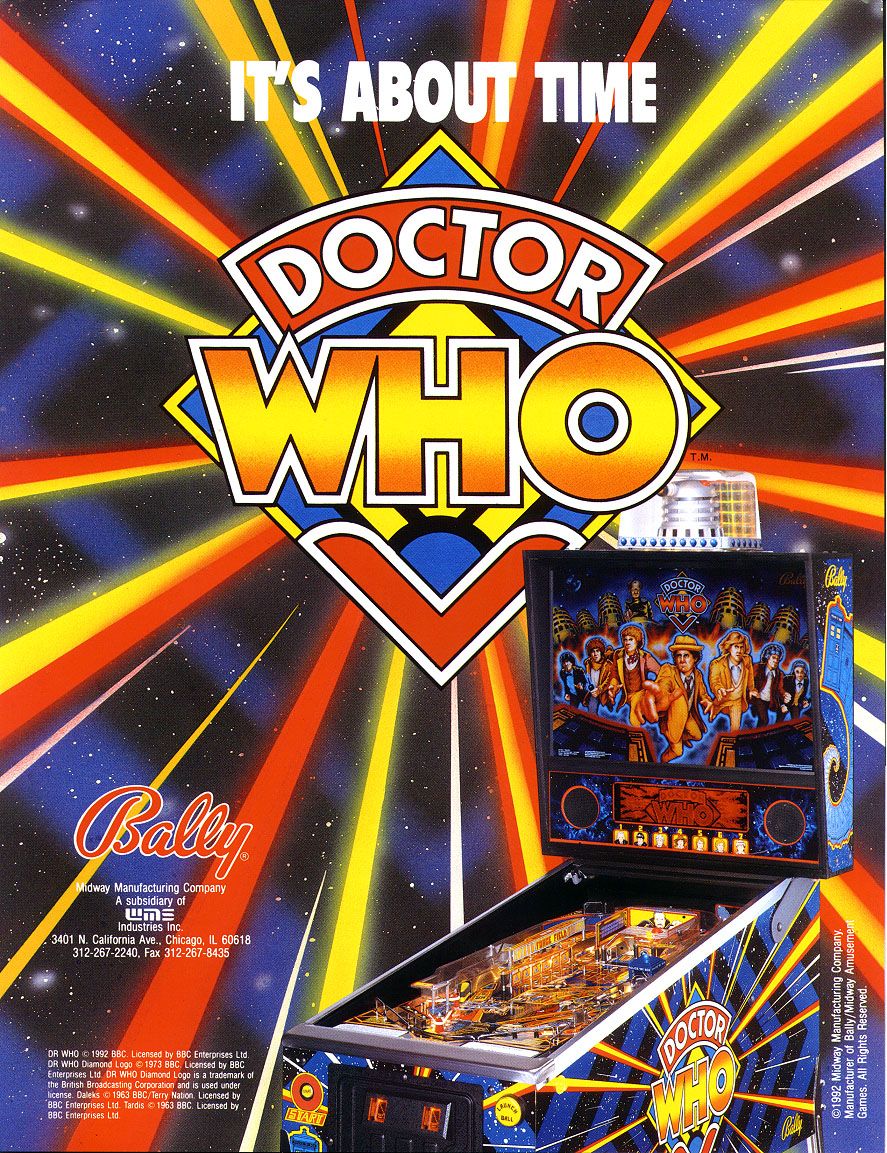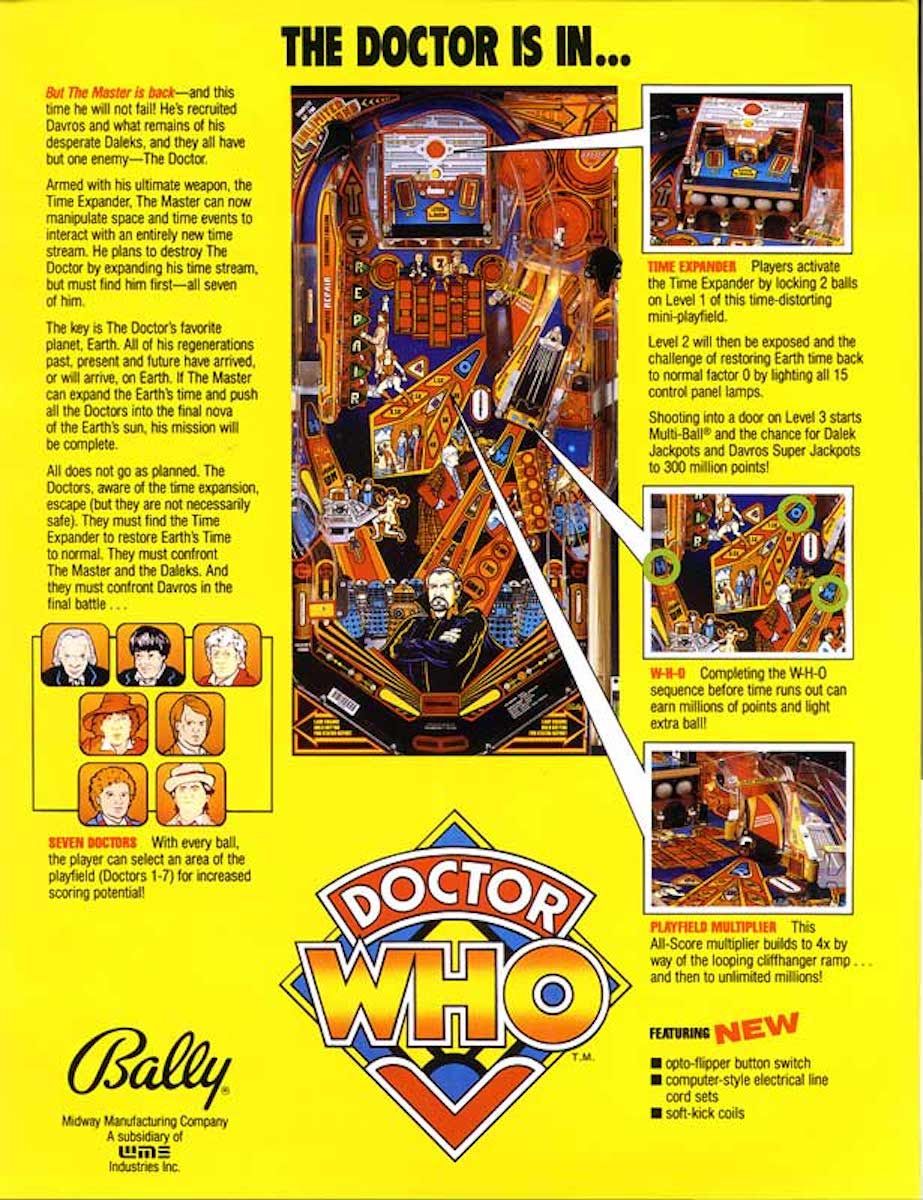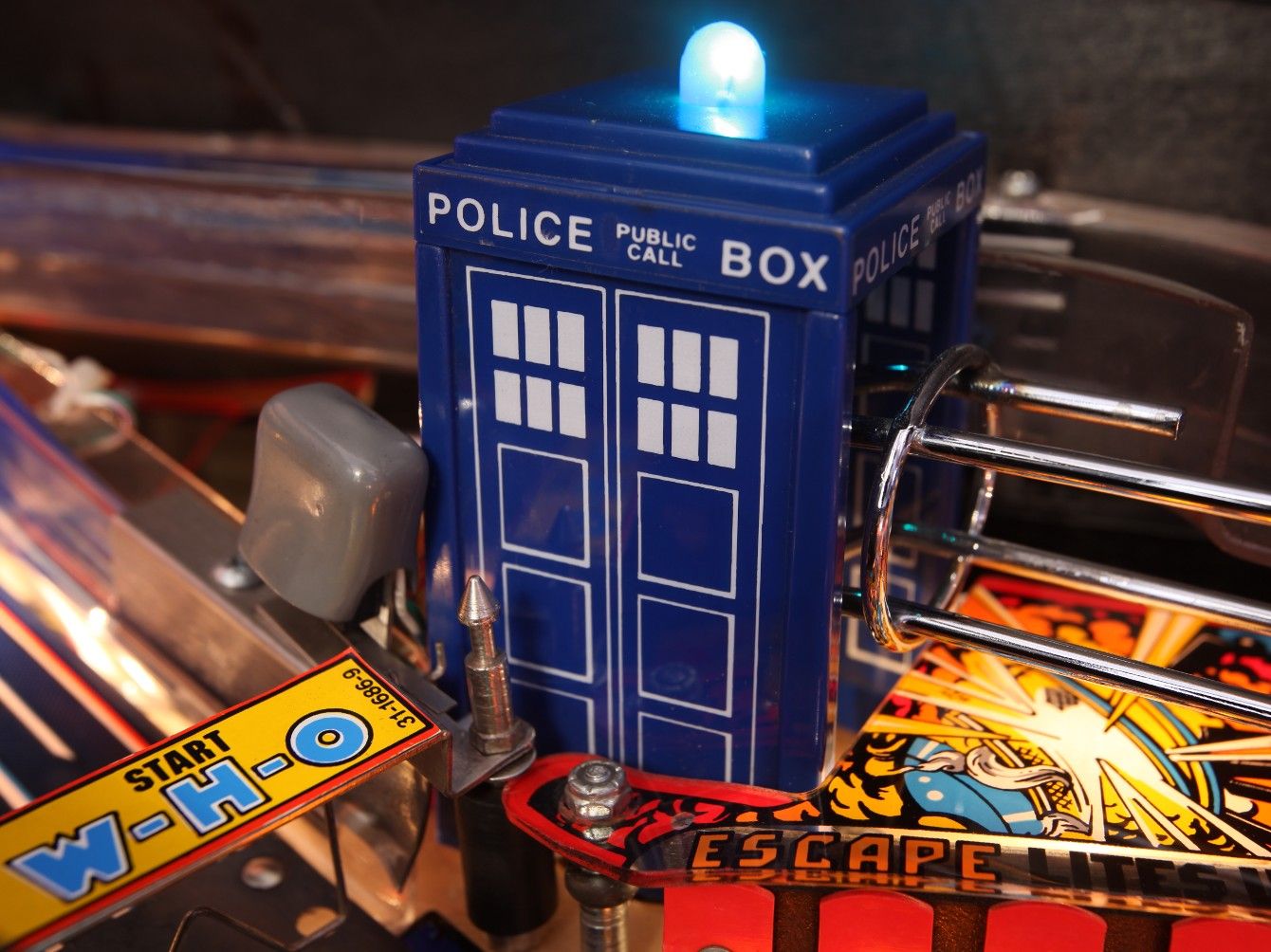In 2023, the British science fiction phenomenon Doctor Who will celebrate its 60th Anniversary. Over the decades, the show has reached a level of cultural significance, but even though the current version of the show is still going strong, there was a dark period at the start of the 90s when it almost vanished. Magazines, comics, and novels kept the series relevant with fans, but the Doctor's adventures and popularity were continued in arcades through a pinball machine.
Pinball can trace its origins back to the late 18th Century in France and is credited with starting the tabletop gaming wave of the 20th century. This year celebrates the 30th Anniversary of the Doctor Who Pinball Machine released by Midway (under the Bally brand name) in September 1992, designed by Bill Pfutzenreuter (Pfutz) and Barry Oursler a duo who created over three dozen pinball machines between them including ones based on Bram Stoker’s Dracula and Dirty Harry.
Doctor Who Was Kept Alive By Pinball
The Doctor Who television series had been put on indefinite hiatus in 1989, and the 1996 Paul McGann TV Movie wasn’t even an idea yet, but the BBC was still looking to license out the property. Doctor Who Pinball featured the first seven Doctors, each paired with a unique scoring feature selected by the player as the game progressed. In addition to knocking balls around the board and trying to hit bumpers and light up icons, the machine had a unique Time Expander unit.
It was a moving mechanism with different levels, which challenged players to lock balls and collect targets all in hopes of opening the game’s multi-ball mode. In the fine tradition of Doctor Who comics, themed artwork covered the cabinet, and the game showcased a light-up TARDIS in the lower right of the board and a Dalek topper. The game also used a digitized version of the series' famous theme song and audio clips of all seven Doctors. Sylvester McCoy, the Seventh and current Doctor at the time, recorded his own dialog specifically for the game.
Doctor Who's Pinball Machine Was Very Complex
Within the gameplay itself, the First Doctor awarded players an extra ball leading to a video mode. The Second Doctor gave more time to make a combo shot to double the score. The Third Doctor allowed an increased chance to score extra balls. The Fourth Doctor made it easier to achieve letter-collect mode. The Fifth Doctor let the player double the Jet Bumper score, while the Sixth Doctor increased the playfield multiplier shot by an extra half point. Finally, the Seventh Doctor awarded an additional shot when the Time Expander was hit, thus enabling a faster multi-ball lock.
All of this was done on a rising and lowering mini-playfield, including several shooter gates (adorned with small pictures of Daleks), and an in-game video function where the player got to battle the Emperor Dalek, who is revealed to be Dalek creator Davros. If all this sounds incredibly confusing, it was. The rules of Doctor Who Pinball were much more complex than other pinball machines released at the time, which unfortunately did not help popularity. Although the game is beloved by collectors, casual players had significant trouble understanding the game’s complex and ever-changing rules.
How Doctor Who Pinball Survives to This Day
These pinball machines lasted in arcade settings for several years before the establishments began to disappear at the turn of the 21st century. Decades later, a digital version inspired an online update, dubbed Doctor Who: Master of Time, which was released in 2016. Based on the original pinball machine but focusing on incarnations of the Doctor that debuted after the classic series, the newer version featured a new voiceover recorded by (then current) Twelfth Doctor Peter Capaldi and Michelle Gomez portraying the devious Missy. It also included voice clips from other NuWho Doctors. The updated version is still available for online purchase.
While video games featuring the Doctor have been hit or miss over the years the Doctor Who Pinball Machine certainly kept the candle of Who fandom burning during a bleak time for the franchise. It also served as a bridge between Classic Doctor Who and the Modern era of the show, paving the way for the franchise to reach the 60-year mark. While not completely withstanding the technological test of time, it is a product of its era, a wonderful piece of nostalgia, and wound up being as complex as the source material itself.




